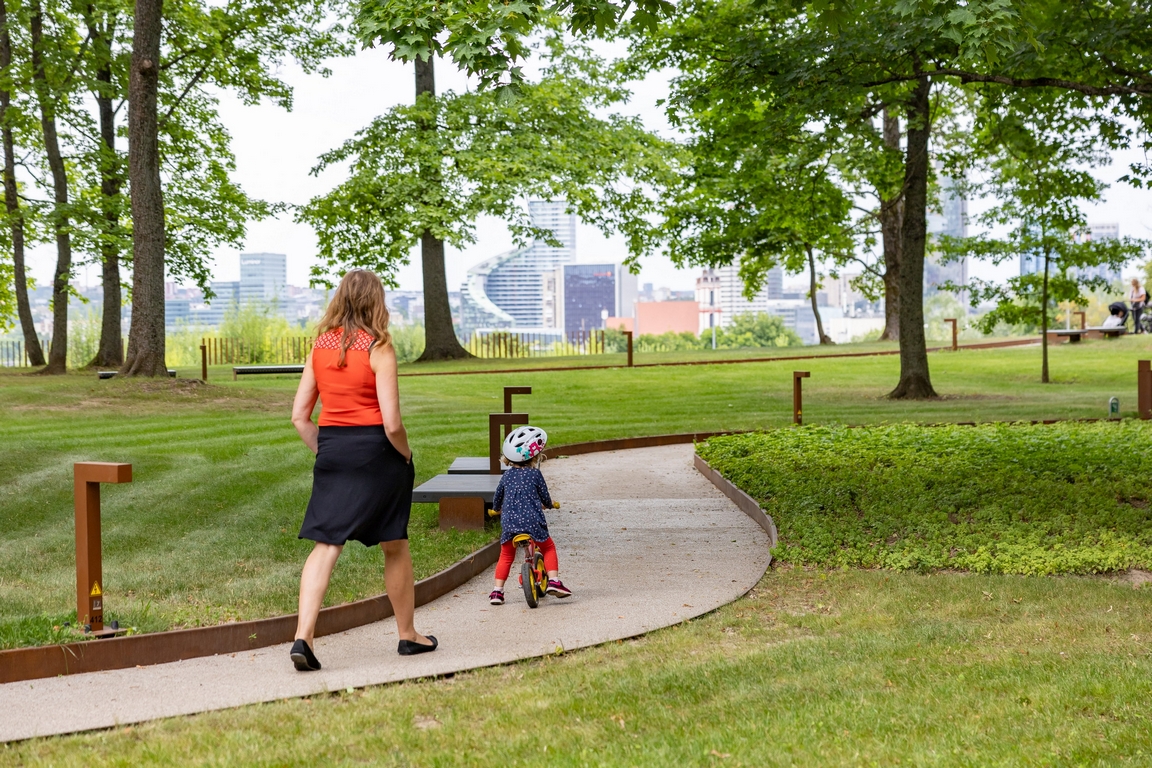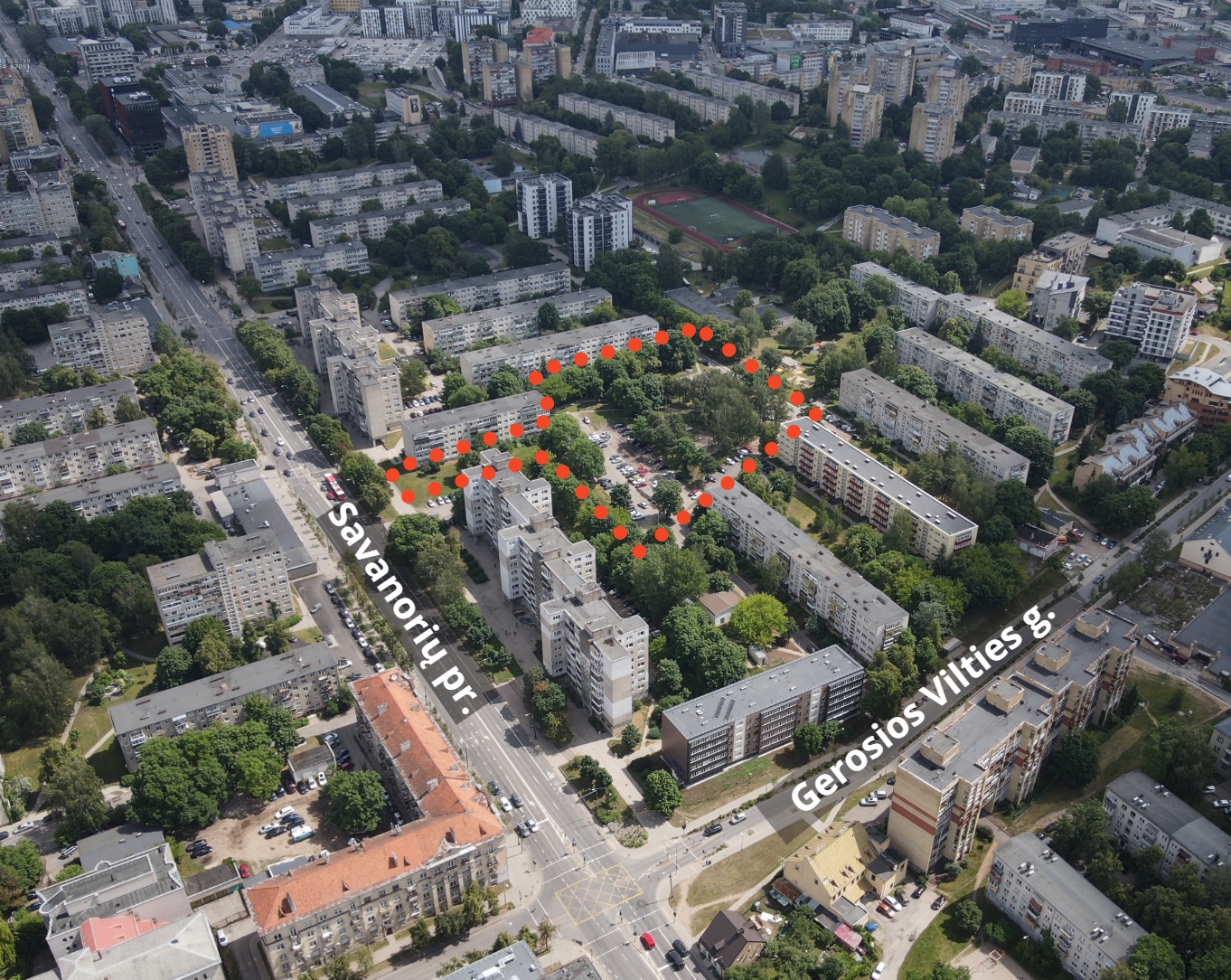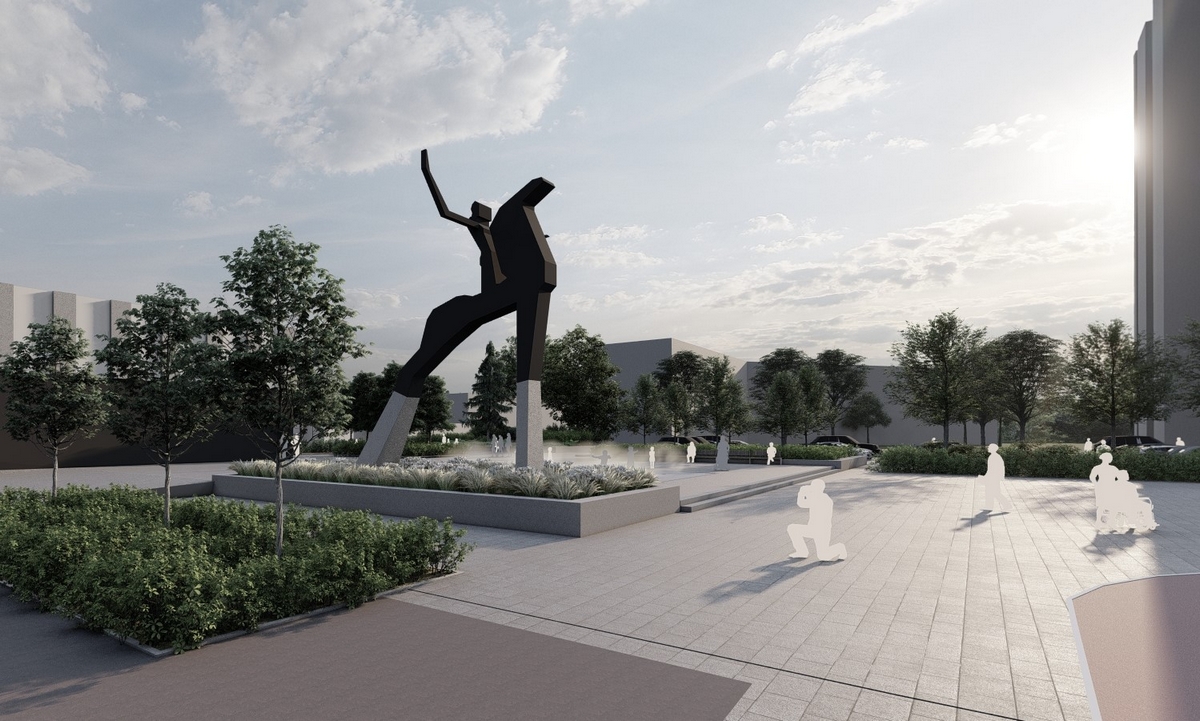The Lutheran Garden – the old Evangelical cemetery of Vilnius on the Taurus Hill – is consecrated and opened to the public after reconstruction in Vilnius. After the cemetery was dismantled during the Soviet era, the area was known as a park next to the Vilnius Marriage Palace. Reconstructed and now subtly blending the history and true purpose of the site with the current needs of the community, the park is now open to the public.
Opening with a focus on the sacred and history
The reconstruction of the Lutheran Garden was aimed at creating a space for quiet relaxation in the undergrowth of the old trees, and to give the area a memorial character by informing about the former cemetery. During the opening ceremony of the Lutheran Garden, the reconstructed park was consecrated by the Bishop of the Evangelical Lutheran Church of Lithuania, Mindaugas Sabutis, and the priest Ričardas Dokšas, after a joint hymn singing together with the Vilnius Evangelical Lutheran Church ensemble “Adoremus”. “We are grateful to the Vilnius City Municipality and all people of good will that the old Evangelical Cemetery, which was desecrated during the Soviet era, has now been revived as a Lutheran garden. With this work, we are repaying our debt to the creators of Vilnius who made their home here. We have built another bridge between them and future generations who will love, build and pray in our city,” said Bishop Sabutis. Andrius Grigonis, Vice Mayor of Vilnius, underlined the importance and significance of the site: “We have gathered together to honour the history of this place and to rejoice in the revival of its memory. The Lutheran Garden is a symbol that connects us to our history, reflecting the multiculturalism of Vilnius and the respect for the representatives of different denominations.”
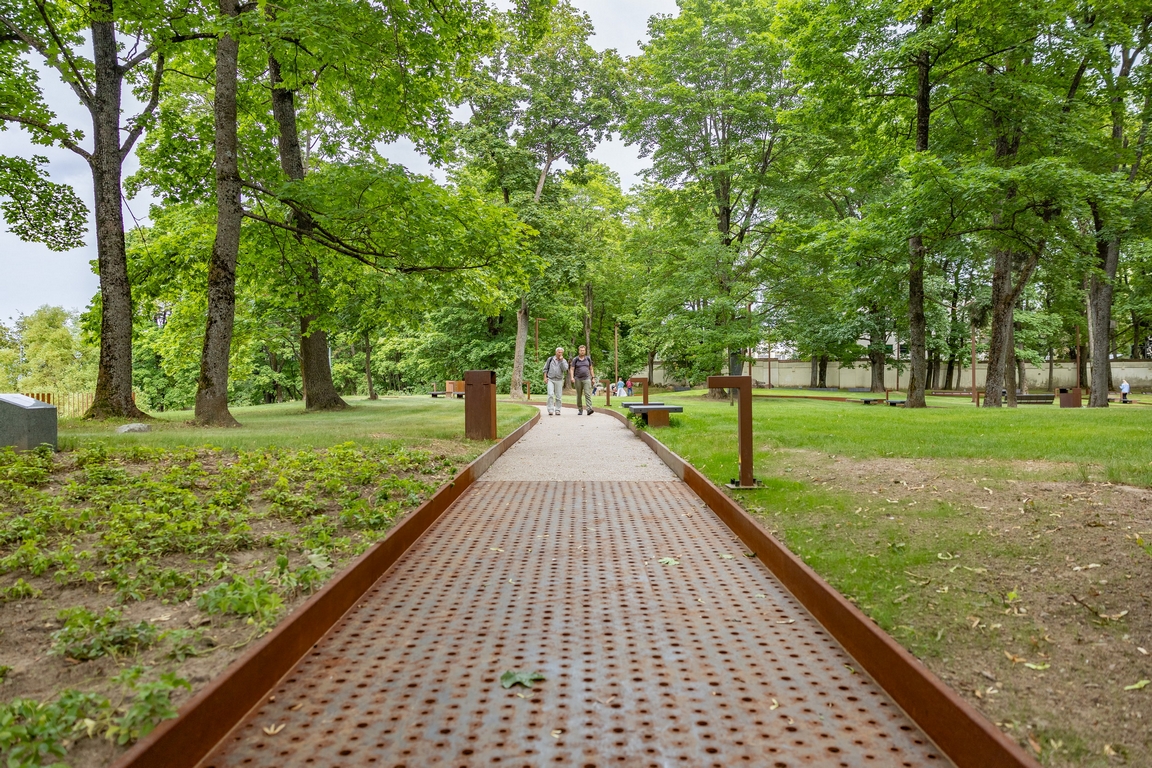
The essence of the park restored
The project involved geophysical and archaeological surveys, and the reburial of some remains. In addition, 12 tombstones from Rasai and Saltoniškės cemeteries were returned to the territory. The locations of five of the monuments were identified on the basis of the 1938 cemetery plan and returned to their old locations, while the rest were placed closer to the Nishkovskis’ chapel. The renovation of the site included the installation of surface sewage networks, the adjustment of the existing path network by reconstructing the paths, the installation of new benches, small architectural elements, and restrained lighting. Additional landscaping has been added to the area: new lawns have been sown, pachysandra flowers have been planted, and in the spring, scylla flowers will delight visitors with their blue blossoms. The reconstruction of the Lutheran Garden was supervised by Vilnius Development Company. Linas Urba, the project manager, said that it was very important to ensure the cooperation of the designers, cultural heritage, environmental and landscape specialists in the coordination of all stages of the project.
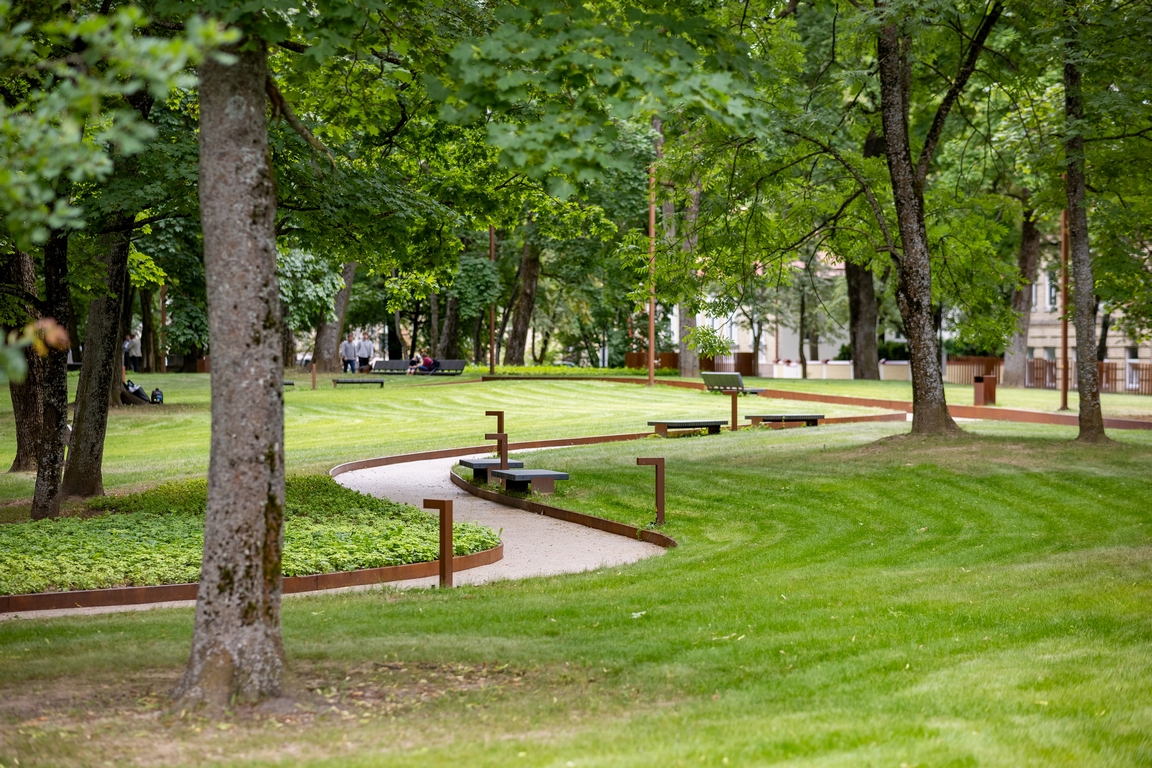
“When supervising the works in this park, we have tried to ensure not only the quality of the preservation of the existing trees and architectural objects, but also to respect the past. The Lutheran Garden now combines a cemetery and a park adapted to the needs of the community. With the Lutheran Garden project, we have restored the essence and historical truth of this place,” emphasised Linas Urba, Project Manager of Vilnius Development Company. The Lutheran Garden was designed by ID Vilnius (formerly Vilniaus Plan). Lolita Vileikienė, the company’s architect and project manager, recalls that back in 1993, architects Giedrė Miknevičienė and Marija Nemunienė were the first to touch upon the restoration of the old Evangelical cemetery on Tauro Hill in Vilnius. However, without additional funding, further design work was halted. It was only in 2018, after receiving funding from the European Union, that a technical project was commissioned, based on the previously prepared design proposals. “This is one of the most interesting projects I have worked on. Appreciating the sensitive history of the site and its current importance for the city’s inhabitants, the Lutheran Garden project has sought to intervene as little as possible in the established environment and the existing landscape, to restore the old paths in the historic sites, and to clarify the boundaries of the burial quarters. We wanted the cemetery territory to be perceived as a separate memorial complex with specific boundaries, so we marked them with fragments of a decorative fence,” said L. Vileikienė. In the future, work will continue: in the eastern part of the former cemetery territory, the fragments of the cemetery fence that have survived will be restored, the restored old gravestone slabs will be returned to the restored niches, a mural will be restored in one of the niches, and there will also be granite slabs with the names of the people who stayed on this territory.
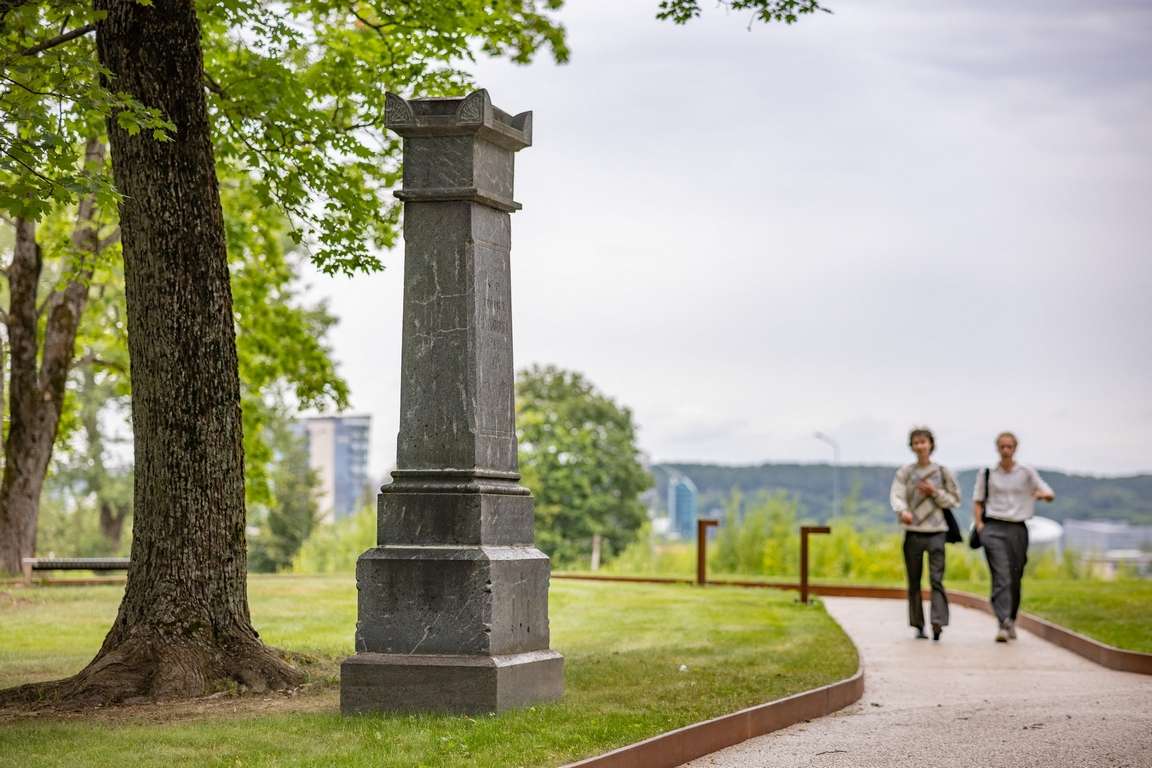
The cemetery resembled a park in the old days
The Lutheran Garden is located on the site of the former Vilnius Evangelical Lutheran Cemetery, which dates back to the 18th century.The cemetery plot on the Buffalo (now Taurus) Hill was bought by Gottfried Hahn, a member of the Vilnius City Council, at the end of the 18th century, for 990 silver rubles. Burials in this cemetery began in 1809. Initially, the cemetery was reserved for Evangelical Lutherans, but from 1830 it was also reserved for Evangelical Reformed (Calvinists). It is the only cemetery in Vilnius with this layout, distinguished by its classical architecture and neat layout. The cemetery was cosy, tidy and richly landscaped. The Evangelical communities in Vilnius were not large and the burials were not dense, so the area resembled a park. Among the many modest tombstones typical of the burial period, there were also luxurious, monumental monuments and obelisks. The cemetery was home to people of many different nationalities, with tombstone inscriptions in Latin, Polish, German, Russian, French, English, Belarusian, Latvian, Swedish, Finnish and Lithuanian recorded in the sources. The cemetery was closed in 1958, when the part that was to be used for the construction of the Profs Union Culture Palace was liquidated. In 1962, it was decided to completely liquidate the Evangelical Cemetery, turning it into a park. At the end of 1972 – beginning of 1973, before the construction of the Marriage Palace began, the graves and tombstones of the southern part of the cemetery were destroyed. The cemetery’s great chapel, designed by the architect K. Schildhaus, with its classical altar, pulpit, organ and bell, built around 1819, was demolished. The Niskovskis’ chapel-mausoleum and a fragment of the cemetery’s eastern fence have survived. “This cemetery, which was in operation for one and a half hundred years and was barbarically destroyed by the Soviet invaders, could be considered one of the oldest cemeteries in the capital, especially since gravestones from the old Evangelical Lutheran cemetery on Liejyklos Street, which had been in operation since the mid-16th century at the turn of the 18th and 19th centuries, had been transferred to it. Today, we see some of the tombstones that have been returned to Tauro Hill after many decades, and they will remind Vilnius residents of the people who once lived and worked here and of our history,” said Kęstutis Pulokas, a member of the Council of the Vilnius Evangelical Lutheran Church, who led a short tour during the opening ceremony of the Lutheran garden. As part of the restoration of historical justice, on 19 November 2022, the remains of some thirty people who were found in the cemetery during archaeological research and other landscaping works were ceremoniously reburied in the central part of the former cemetery, where a memorial cross is now erected.
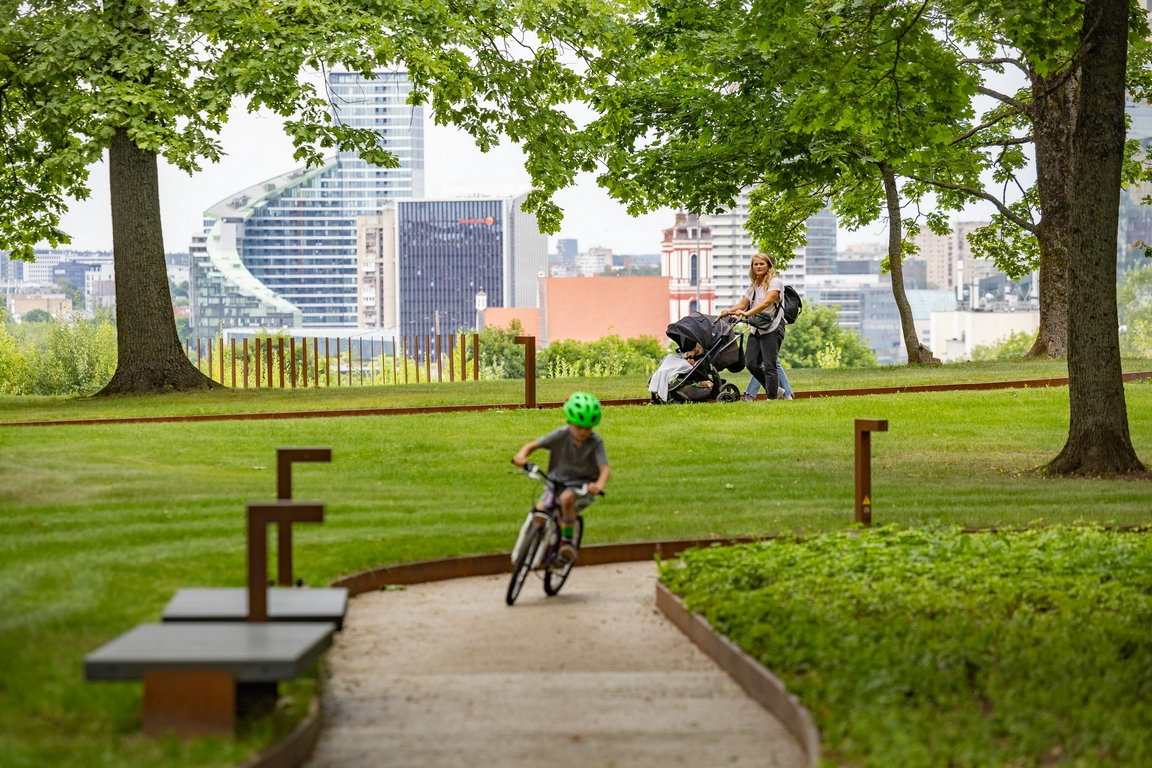
Adds to the appearance of the area
The Lutheran Garden complements the green network of the central part of Vilnius, stretching from Vingis Park through Tauro Hill, connected by a new pedestrian and bicycle viaduct to Pylimo Street, Reformatų Square, Vingrių Square, and further along the richly planted Pylimo Street towards Halės Market. The Lutheran Garden is also an indication of the future appearance of the territory of Mount Taurus: the park’s paths will extend further and its architectural forms will be echoed throughout the entire territory of Mount Taurus. The Lutheran Garden’s contract work is worth almost €2.2 million. The project is partly financed by the European Union, the state budget and Vilnius City Municipality and is implemented under Measure No 07.1.1-CPVA-R-904 “Integrated Development of Large Cities” of Priority 7 of the Operational Programme for Investment of European Union Funds 2014-2020, “Promoting Quality Employment and Participation in the Labour Market”. Project manager, architect Lolita Vileikienė, architects Julija Musteikytė – Mora, Paulius Jonys, Rūta Astasevičiūtė, landscape architects Jurgita Stonkutė, Živilė Savickaitė. Nikolaj Moškov, Kęstutis Sakalauskas, engineers Eglė Budukevičienė, Artūras Mazeliauskas, Aušra Volskienė.
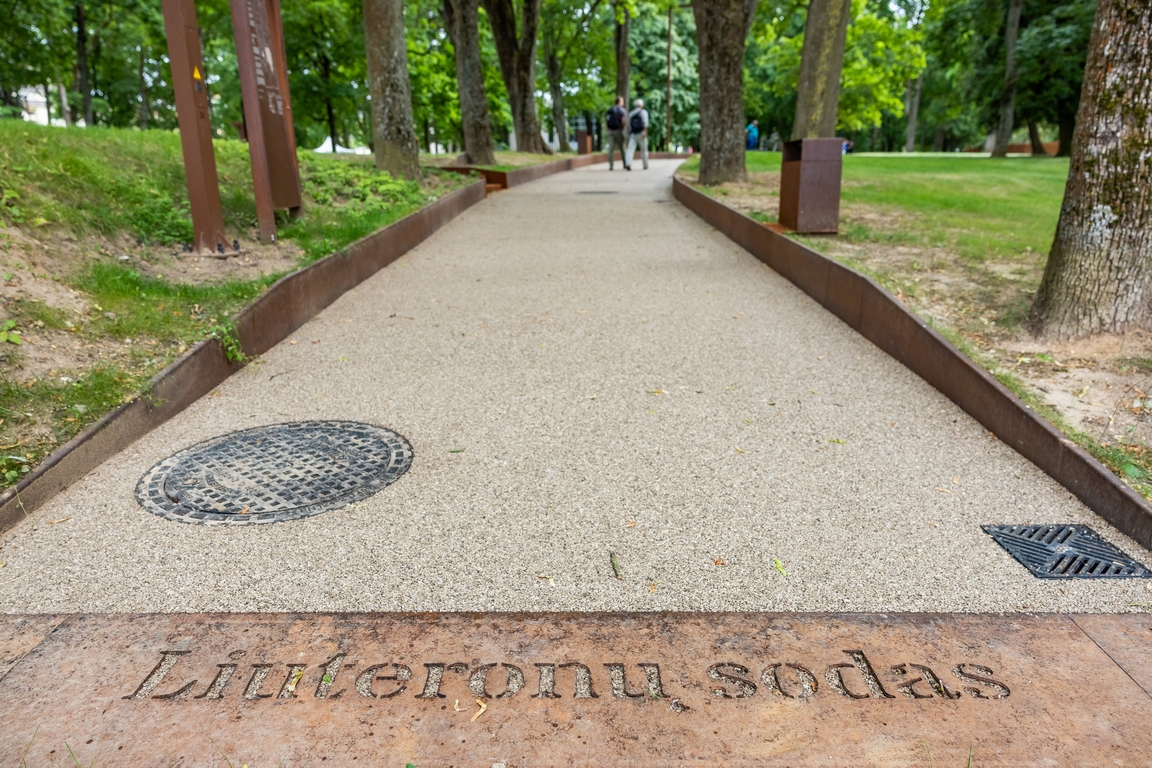
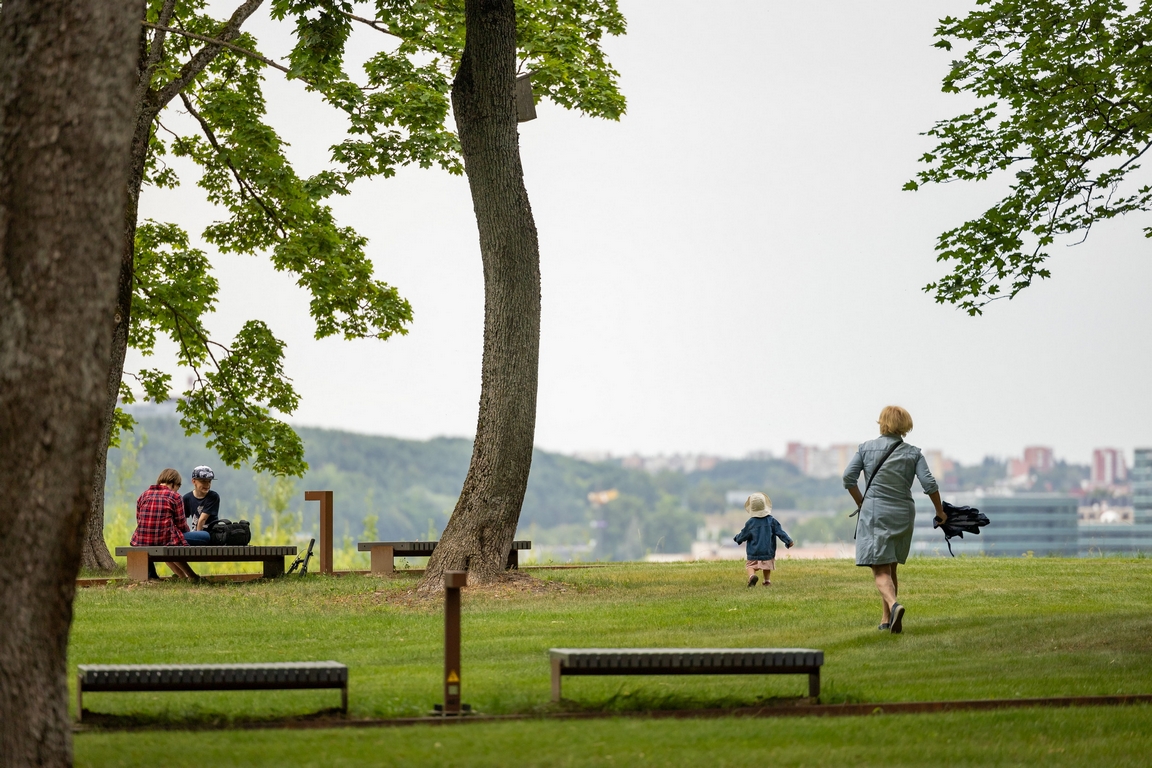
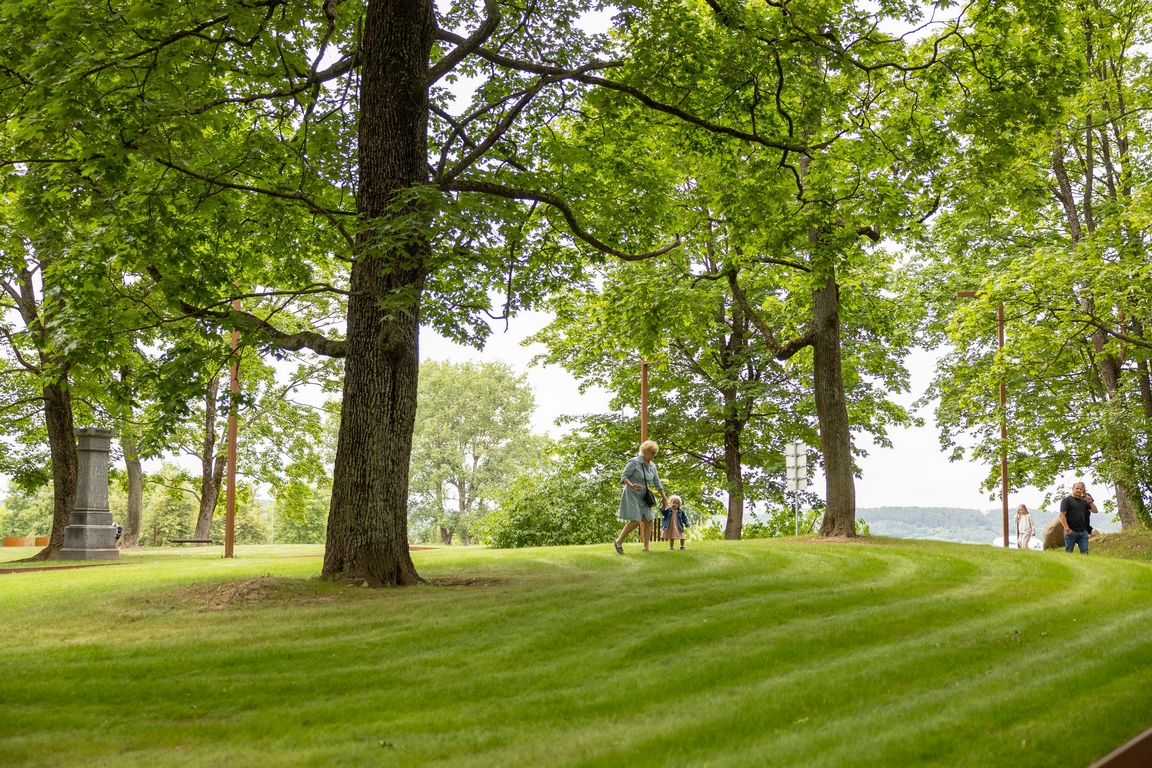
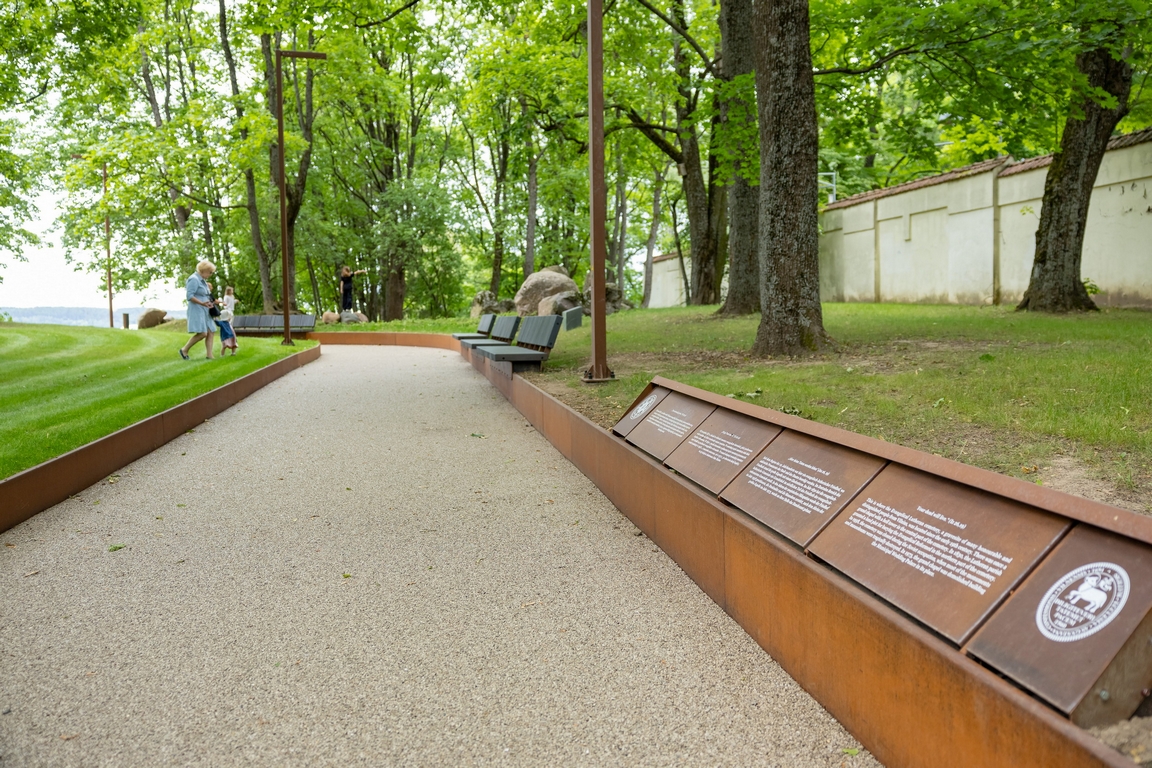
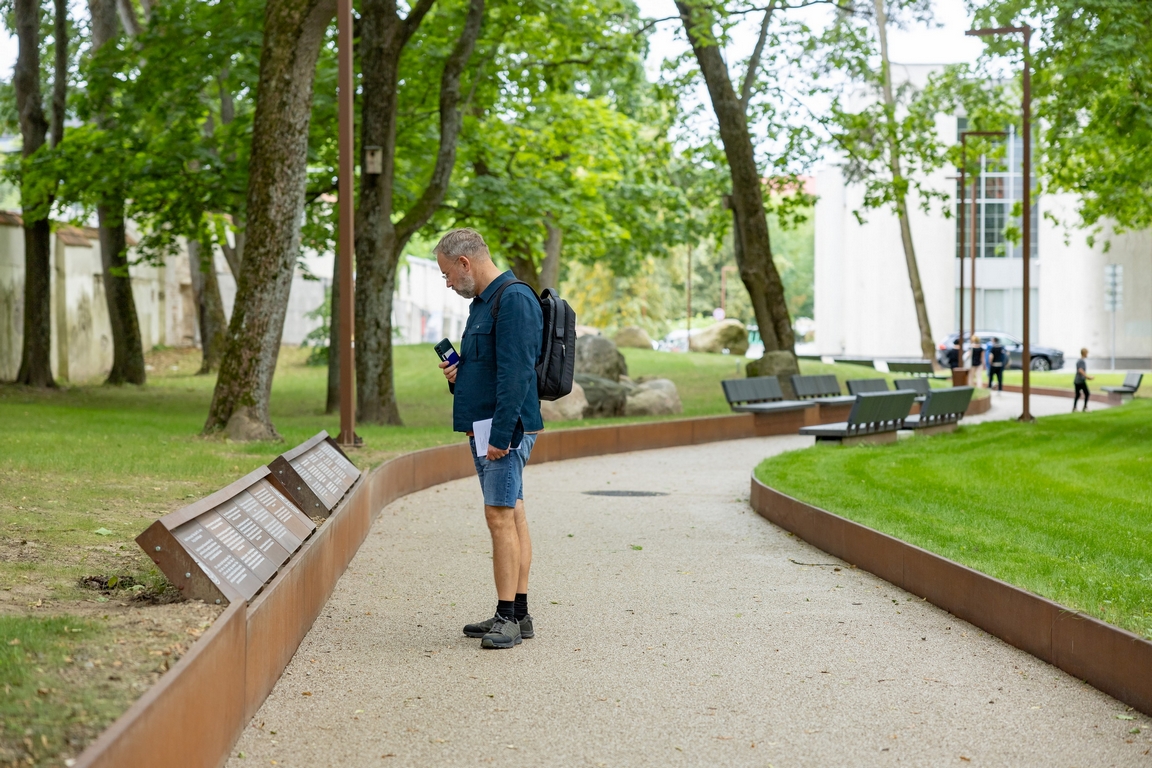
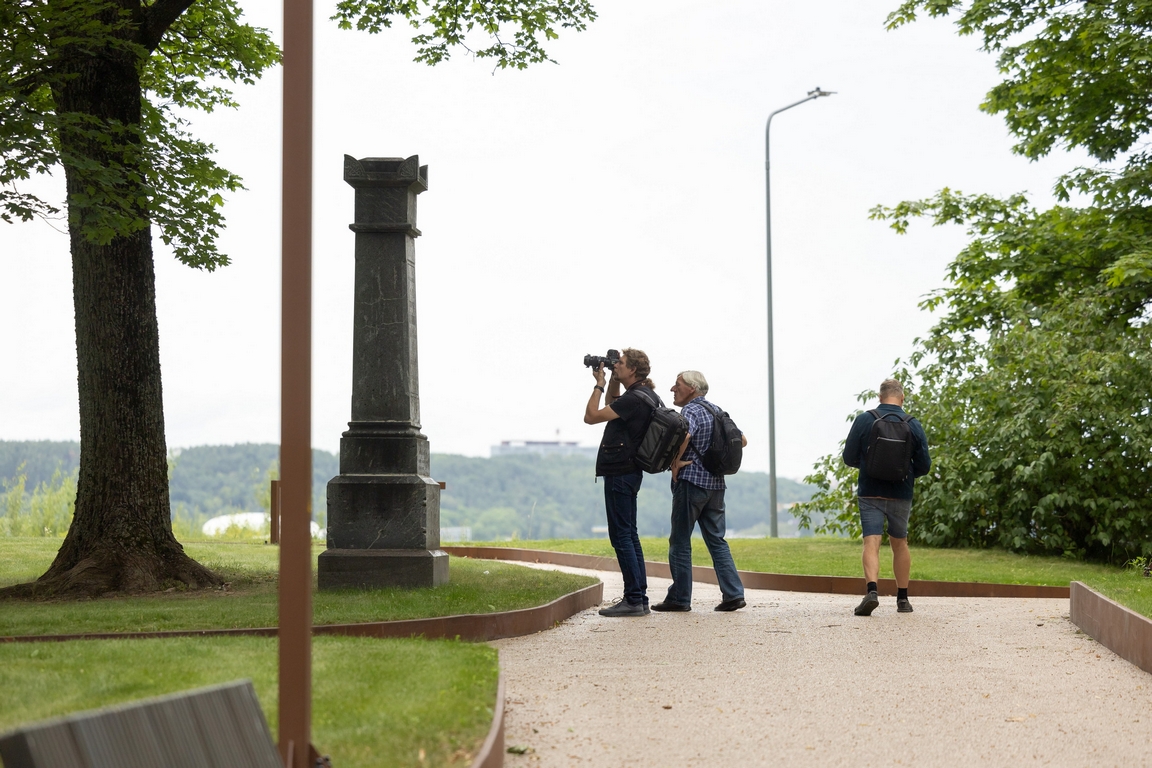
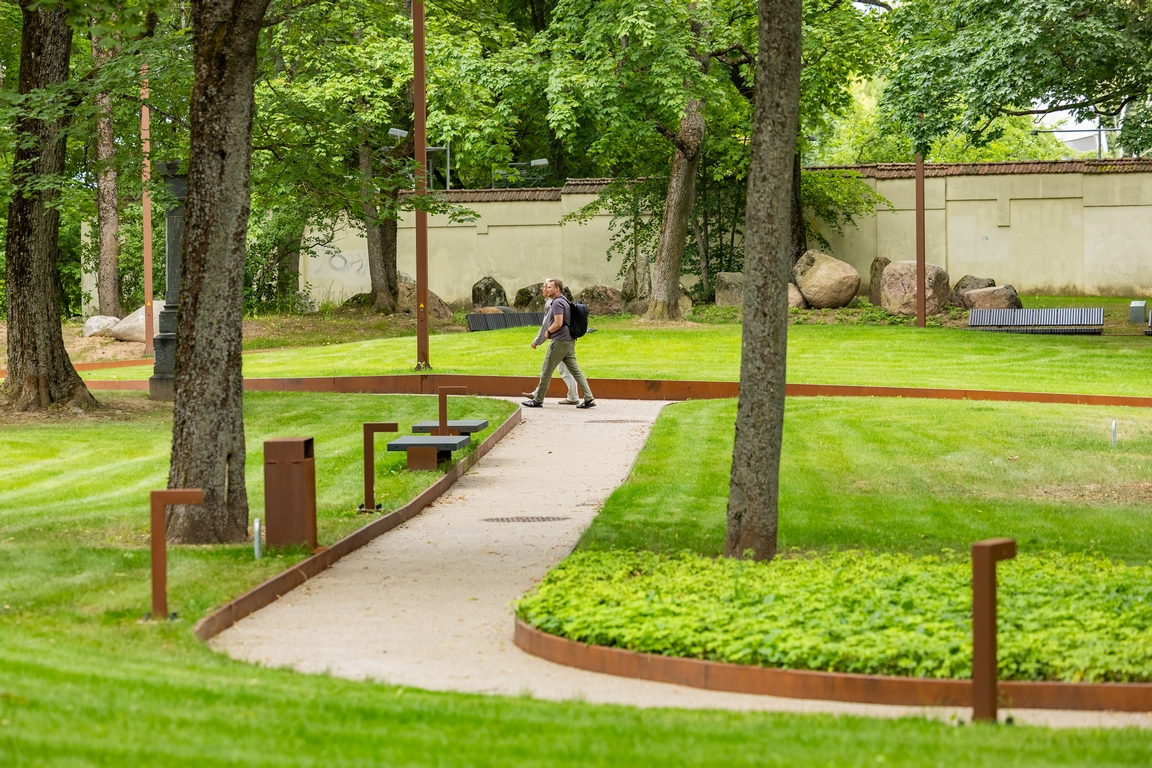
Photo by Sauliaus Žiura

